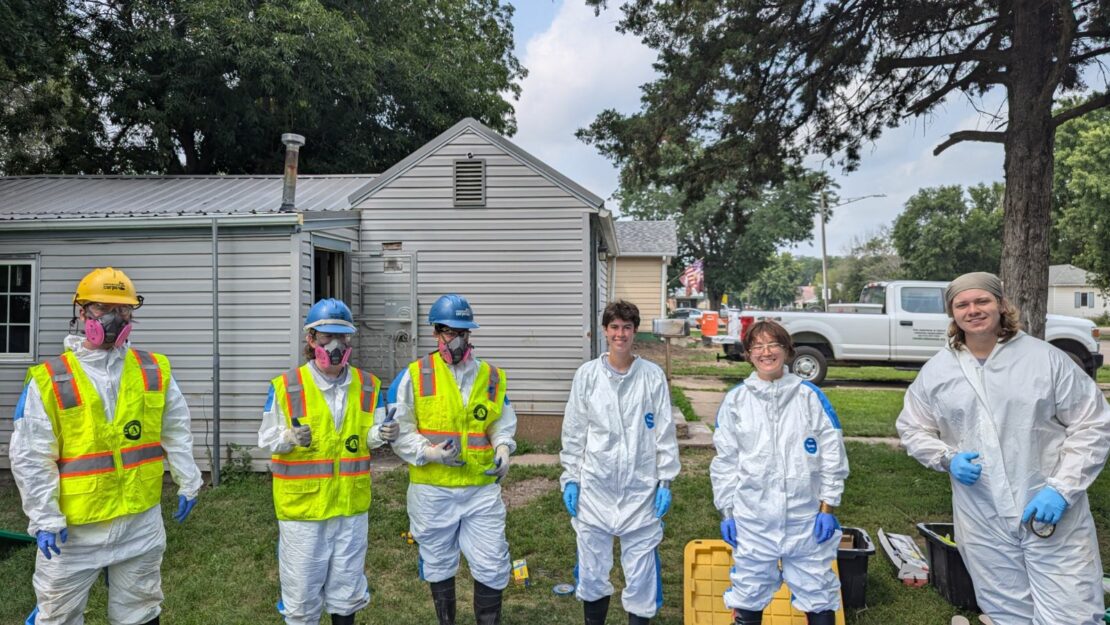The Ozark Crew’s Disaster Response in Northwest Iowa

By RJ Ruotolo, Ozark Field Crew Member/ AmeriCorps Member
Last week, us on the Ozark crew returned from our 30 day disaster deployment in Northwest Iowa. For the last month, for 10 hours a day, six days a week, we mucked and gutted homes of those affected by the flooding.
All of us on the Ozark Crew are transplants from other states, and we frequently travel for work, so moving around isn’t that big of a deal for us. In my head, it was only a matter of time before we got the call to deploy. It could be suiting up from head to toe in full body Tyvek suits, respirators, and full personal protective equipment to rip out mold-infested drywall or provide mold suppression—I knew we would still want to go. That call came early July, and we were set to leave a week later.
Our first stop was seven hours away in Des Moines, Iowa to meet up with fellow Conservation Corps members joining us on the trip. From there, it was only four hours to Dordt University in Sioux Center which would be our home for the next two weeks.
Of the disaster deployment housing situations, a dorm room was one of the more luxurious stays. With four people in a suite, we had full kitchens and bathrooms, and across the street was a recreational center with a water park, tennis and volleyball courts. Behind the university was a small prairie with walking trails. So during the day, we learned to thoughtfully deconstruct the interiors of houses, soaking our clothes with sweat from the Tyvek suits and the humid, 90 degree weather, while at night we played tennis, swam, and jogged with our fellow AmeriCorps disaster responders.

Our second move came a little over halfway into our deployment. Our stay at Lake Okoboji didn’t have the same amenities, we went from a suite to rows of bunk beds and one kitchen. However, Okoboji is most certainly the happening place in August. And although it was a downgrade amenities-wise, the camp was bustling with activity and newcomers. We were the first wave responders, totaling about 40 people. The second wave joined us for our last week, nearly doubling the camp with folks from other conservation corps.
The rec hall at the camp was alive and well at night after work with ping pong and air hockey tournaments, crafters, and chatters. Often there were people crowded around the fire pit or relaxing by the water. It almost didn’t feel like work.
Looking back, I remember all the fun times we had—finding a frog in a basement, watching Pro Wrestling at the Plymouth County Fair, singing with my crew while we worked, or the finger rocket launch war we had late one night. But the tough moments like when I spilled rancid water on myself when removing a mold damaged sink or when I shuffled through a pitch black crawl space to provide mold suppression seem more blurry. So I know if I get the call for another deployment, I know how I’ll answer.
